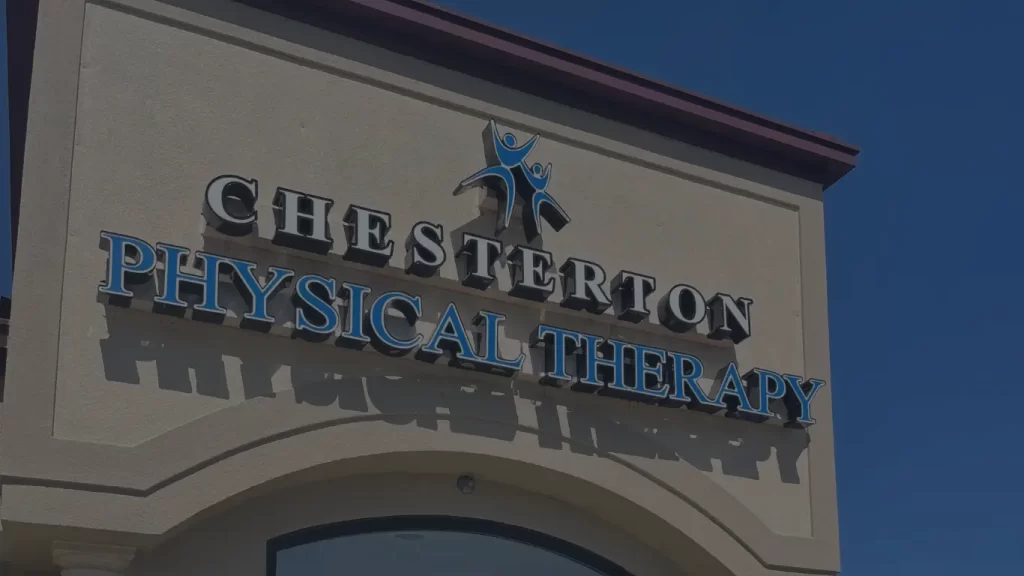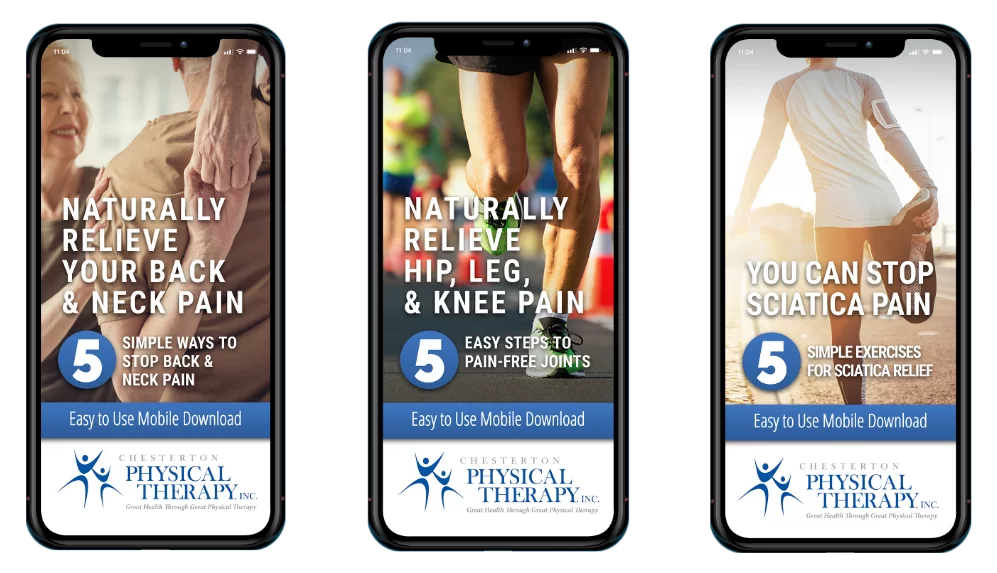Health Blog
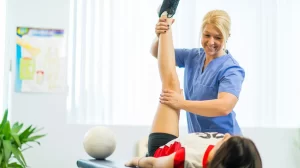
Reclaim Your Game: Expert Strategies for Sports Injury Treatment
Reclaim Your Game: Expert Strategies for Sports Injury Treatment Introduction In the United States, sports injuries have become a common challenge, with over 8.6 million occurrences annually, as reported by the Centers for Disease Control and Prevention (CDC). This underscores the vital role of physical therapy in aiding an athlete’s recovery, a crucial step to ensure their return to peak performance. Understanding Sports Injuries: Common sports injuries include ankle sprains, hamstring strains, and knee injuries like ACL tears. These injuries not only impact the athletes’ immediate performance but can also have long-term effects on their careers, especially if not addressed promptly and effectively. Physical Therapy’s Role in Recovery Physical therapy is tailored to meet the specific needs of athletes, focusing on pain management, functional restoration, and prevention of future injuries. It’s a comprehensive approach, ensuring athletes not only recover but also regain their full potential. Advanced Physical Therapy Techniques Physical therapists employ various advanced techniques. Manual therapy, increasingly popular among people, involves hands-on techniques to reduce pain and enhance mobility. Dry needling, gaining traction in sports therapy circles, targets deeper tissues to stimulate healing. Aquatic therapy, a low-impact option, is particularly effective for early-stage rehabilitation. Moreover, sport-specific exercises are designed to meet the unique demands of each athletic discipline. Success Stories: Athletes’ Recovery Journeys 👍 Testimonials or real stories of our patients Injury Prevention Strategies in Sports Athletes are advised to follow tailored injury prevention strategies. These include regular strength training, flexibility exercises, and using proper equipment, all crucial in reducing the risk of sports injuries. Mental Health and Recovery in Sports Addressing the psychological aspect of recovery is vital, especially in the competitive environment of sports. Mental resilience, stress management, and psychological support are integral parts of the recovery process. Nutrition and Recovery: Diet plays a vital role in the recovery process. Athletes are advised to follow a balanced diet rich in proteins, vitamins, and minerals, which are essential for repairing tissues and reducing inflammation. How Chesterton Physical Therapy Can Aid Athletes in Sports Injury Recovery Chesterton Physical Therapy’s Role in Athlete Recovery Chesterton Physical Therapy, with its state-of-the-art facilities and a team of experienced therapists, stands as a beacon of hope for athletes grappling with sports injuries.. Customized Recovery Programs: Understanding that each athlete’s injury and recovery needs are unique, Chesterton Physical Therapy prides itself on offering personalized rehabilitation programs. These programs are designed after thorough assessments and are aligned with the specific requirements of the athlete’s sport, ensuring a focused and efficient recovery path. Advanced Techniques: Our commitment to incorporating advanced techniques into our practice sets us apart. This includes a blend of traditional methods like manual therapy and modern approaches such as dry needling, deep tissue laser therapy and sport-specific rehabilitation exercises, providing a comprehensive and unique recovery plan for every athlete. Success Stories: Athletes’ Recovery Journeys with Chesterton Physical Therapy Our Focus on Preventative Care and Education: Beyond rehabilitation, we emphasize the importance of injury prevention and athlete education. Our programs include guidance on proper training techniques, body mechanics, and lifestyle adjustments to minimize the risk of future injuries. We Don’t Want You to Sit Out of the Game; we’ll Help You Get Back In! Our message at Chesterton Physical Therapy is clear and heartfelt: “We don’t want you to sit out of the game, we’ll help you to get back in.” Understanding the frustration and eagerness that comes with sports injuries, our dedicated team is committed to not just healing your injuries but reigniting your spirit for the game. With us, you’re not just recovering; you’re preparing for a triumphant return to the sport you love. So, lace up your shoes, and let’s get you back in the game, stronger and more determined than ever! FAQs About Sports Injury Recovery 1. What are the most common sports injuries in the USA? Ankle sprains, hamstring strains, and knee injuries are among the most prevalent. 2. How does physical therapy help in the recovery of sports injuries? It aids in pain management, restores function, and prevents further injuries. It also help you with a tailored plan to recover your injury fast. 3. What are some advanced physical therapy techniques? Techniques include manual therapy, dry needling, and sport-specific rehabilitation exercises. 4. How important is nutrition in the recovery process? Nutrition is crucial as it provides the necessary nutrients for tissue repair and reducing inflammation. 5. How long does it typically take to recover from a sports injury with physical therapy? The recovery time varies depending on the injury’s severity and the athlete’s adherence to the therapy program. 6. Can physical therapy prevent future sports injuries? Yes, physical therapy can help prevent and reduce future injuries by strengthening muscles and improving flexibility and balance. . Conclusion In conclusion, the journey to recovery for athletes facing sports injuries is a multifaceted process. Advanced physical therapy techniques, coupled with a focus on mental health and nutrition, play a crucial role. The encouraging message for athletes is that with the right approach, dedication, and access to cutting-edge physical therapy, a full recovery and return to peak performance is not just a possibility but a realistic goal.
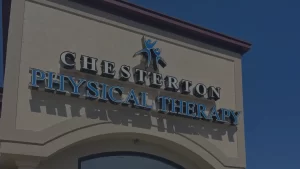
Unlock Your Potential With Chesterton Physical Therapy in Portage
Unlock Your Potential With Chesterton Physical Therapy in Portage Get Back to Your Active Lifestyle with Knee Arthritis Treatment Without Surgery Physical therapy is a healthcare practice that aims to assist people in recovering from surgeries, injuries, or disabilities by using a range of methods like exercises and stretches to increase mobility, decrease pain, and enhance physical function in general. It is important for those striving to achieve optimal health and well-being to locate the best physical therapy services in Portage. Choosing the appropriate physical therapy clinic can provide patients with individualized care, advanced treatment options, and professional guidance to achieve their objectives. This article will explore the advantages of physical therapy and spotlight some of the best physical therapy clinics situated in Portage, Indiana. Factors to Consider When Choosing the Best Physical Therapy When it comes to selecting the best physical therapy clinic in Portage, several factors need to be considered. Here are some important things to keep in mind: Location and convenience: Choosing a physical therapy clinic that is easily accessible from your home or workplace and offers flexible appointment times to accommodate your schedule is crucial. Range of services offered: Make sure the clinic you choose provides a variety of services that suit your needs. This includes manual therapy, therapeutic exercises, and modalities like ultrasound and electrical stimulation. Experience and expertise of therapists: The experience and expertise of the physical therapists play a critical role in determining the quality of care you receive. It is vital to look for licensed and experienced therapists who specialize in treating your specific condition. Reputation and reviews: Checking the clinic’s reputation and reading reviews from other patients can give you a good idea about the quality of care provided. You should opt for clinics with a good reputation for quality care and positive patient outcomes. Insurance and payment options: Make sure the physical therapy clinic accepts your insurance plan, and offers flexible payment options to make treatment more affordable. By considering these factors, you can find the best physical therapy clinic in Portage that meets your needs and helps you attain your health and wellness goals. Why Choose Us in Portage? Chesterton Physical Therapy is located at 3190 Willowcreek Rd Suite A, Portage, IN 46368. The clinic offers a variety of services, Check What We Treat & How We Treat . The experienced physical therapists at Chesterton Physical Therapy provide individualized care to each patient and use advanced equipment and techniques to create customized treatment plans based on each patient’s specific needs and goals. Patients have praised the effectiveness of their treatment methods and the welcoming and friendly staff at the clinic. Chesterton Physical Therapy is conveniently located in Portage and easily accessible to patients from surrounding areas. Additionally, the clinic accepts most insurance plans and offers flexible payment options to ensure that patients receive quality care without financial strain. Overall, Chesterton Physical Therapy is a trusted option for anyone in need of physical therapy in Portage, providing comprehensive services and expert care from a dependable team. Tips for Maximizing the Benefits of Physical Therapy To manage pain, recover from injuries, and improve mobility, physical therapy can be highly beneficial. To maximize the benefits of physical therapy sessions, it is crucial to adhere to the treatment plan closely. This may involve attending regular appointments, performing at-home exercises, and making necessary lifestyle adjustments. Certain lifestyle changes, such as getting sufficient rest, eating a nutritious diet, managing stress, and staying active, can support the healing process and boost physical therapy benefits. Your physical therapist may recommend exercises and stretches to do at home, which can enhance strength, flexibility, and range of motion while reducing pain and discomfort. Follow the therapist’s instructions carefully and ask any questions that you may have. Why Completing All Physical Therapy Sessions is Important It is crucial to attend all recommended physical therapy sessions to achieve the best possible outcomes for your health condition. Even though it may seem tempting to skip sessions or discontinue therapy once you begin feeling better, doing so can negatively impact your recovery process and cause further complications. Here are some reasons why attending all of your physical therapy sessions is important: Customized Treatment Plans: Physical therapy treatment plans are personalized to meet each patient’s unique needs. Missing sessions or not completing the entire course of treatment can disrupt progress and prevent desired outcomes. Reoccurrence of Pain or Injury: Skipping sessions or stopping treatment early can increase the likelihood of recurring pain or injury. Without completing the recommended physical therapy sessions, your body may not fully heal and recover, increasing the risk of further complications. Wasted Time and Money: Incomplete physical therapy sessions can lead to unsatisfactory outcomes, resulting in wasted time and money spent on therapy sessions. Case Study Maribel had been experiencing lower back pain for several weeks and was referred to Chesterton Physical Therapy in Portage. She attended her first few sessions and began to feel some relief from her pain. However, due to her busy schedule, she started missing sessions and eventually stopped attending therapy altogether. A few months later, Maribel’s lower back pain returned, and this time it was more severe. She went back to Chesterton Physical Therapy and explained that she had not completed her previous course of treatment. The therapist started a new treatment plan and advised Maribel to complete all of her sessions to ensure a full recovery. After completing all of her sessions, Maribel’s lower back pain disappeared completely, and she was able to return to her normal daily activities. However, Maribel realized that by not completing her previous physical therapy sessions, she had caused herself more pain and prolonged her recovery time. In conclusion, it is important to attend all recommended physical therapy sessions to achieve the best possible outcome and to prevent any complications from arising. Conclusion In conclusion, physical therapy can be an effective way to treat a wide range of injuries, conditions, and pains. It is important to find the best physical therapy clinic in Portage to ensure you receive the highest
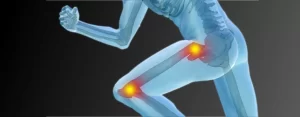
Knee Arthritis: Innovative Relief Without Going Under Knife!
Knee Arthritis: Innovative Relief Without Going Under Knife! Get Back to Your Active Lifestyle with Knee Arthritis Treatment Without Surgery Knee arthritis is a common condition that causes pain and stiffness in the knee joint. It is caused by the wear and tear of the cartilage that cushions the bones in the knee. As the cartilage wears down, the bones begin to rub against each other, causing pain and inflammation. Surgery is often considered as the final option for treating knee arthritis, but there are several non-surgical treatment options that can provide relief and improve function. Non-Surgical Options For Knee Arthritis Treatment Medications: Over-the-counter pain relievers such as ibuprofen and acetaminophen can help reduce pain and inflammation. If these medications are not effective, your doctor may prescribe stronger pain medications or anti-inflammatory drugs. Physical therapy: Physical therapy can help improve range of motion and strengthen the muscles around the knee. Exercises such as cycling, swimming, and using an elliptical machine can also help reduce pain and improve function. Injections: Corticosteroid injections can help reduce inflammation and pain in the knee. Hyaluronic acid injections can also be used to lubricate the knee joint and provide relief. Bracing: Wearing a knee brace can help provide support and stability to the knee, which can help reduce pain. Lifestyle changes: Maintaining a healthy weight, avoiding activities that put excessive stress on the knee, and using proper technique when engaging in physical activities can help reduce the symptoms of knee arthritis. Let Our Expert Physical Therapists Guide You Towards A Pain-Free Future >> It’s important to note that the treatment plan will depend on the individual’s needs and the severity of the arthritis. It’s important to consult with a doctor or a physical therapist to develop a plan that is right for you. Physical Therapy: Best Non-Surgical Treatment For Knee Arthritis Physical therapy is a key component of non-surgical treatment for knee arthritis. A physical therapist can help you improve range of motion, decrease pain and inflammation, and strengthen the muscles around your knee. Here are some specific ways physical therapy can help with knee arthritis: Range of Motion Exercises: Physical therapists will work with you to develop an exercise program that helps improve the flexibility and range of motion in your knee joint. This includes exercises such as leg extensions, leg curls, and calf stretches. Strengthening exercises: Building strength in the muscles that surround the knee joint can help take pressure off the knee. The therapist will work on exercises that target the quadriceps, hamstrings, and calf muscles, as well as the glutes and core. Pain Management: Physical therapy can help reduce pain and inflammation by using techniques such as ultrasound, electrical stimulation, and hot/cold therapy. Gait Training: The therapist will work with you to improve your walking pattern. Improper gait can put excessive stress on the knee joint, so it’s important to correct it. Education: A physical therapist will teach you how to properly perform exercises, how to use assistive devices such as crutches or canes, and how to manage your condition outside of therapy sessions. It’s important to note that a physical therapy program for knee arthritis should be tailored to your specific needs, taking into account the severity of your condition and your overall health. A physical therapist will work with you to develop a treatment plan that is right for you and help you set and achieve your therapy goals. Why Choose Chesterton Physical Therapy At Chesterton Physical Therapy Clinic physical therapists will examine your hip and/or knee for signs of misalignment or structural damage, as well as your stance, posture, gait, and range of motion at your first appointment. Following your physical exam, your physical therapists will recommend a physical therapy plan for you to relieve unnatural stress and strains. They will also work to improve your overall joint function so that you can resume your normal life. You will be given specific exercises to help relieve joint pain and stabilize your weak hip and/or knee. Exercises will vary depending on your condition; for example, those experiencing kneecap pain typically respond better to exercises that focus on strengthening both the hips and the knees, rather than just the knees. You may also be given core strengthening exercises to help strengthen your back muscles, lower abdominal muscles, and pelvic muscles. Core exercises are intended to improve your posture, in addition balancing the weight on both sides of your body. In conclusion, knee arthritis is a common condition that can be treated without surgery. Physical therapy is the best of the non-surgical options that can provide relief from the symptoms of knee arthritis. It’s time to take a stand against your hip and knee pain; get started on the road to long-term pain relief today! To speak with one of our dedicated physical therapists, contact Chesterton Physical Therapy today. You’re in good hands at our Dunes Plaza, Willowcreek Rd Suite A and Sand Creek physical therapy practice! With over 26 years of experience in acute care, subacute care, inpatient rehab, home health, TBI, SNF, and outpatient, she specializes in using manual therapy and neuromuscular techniques to achieve the best possible outcomes for patients. Dr. Singh is certified in weight management, Anodyne Therapy, and Intone, and incorporates innovative technology such as Biosway, Anodyne Therapy, and Intone into her practice. Her passion lies in outpatient care, where she can use her clinical skills to make a difference in the lives of her patients. She places the patient first in every interaction and aims to provide a caring touch while providing care. In her free time, Dr. Singh enjoys quiet evenings, traveling, movies, and reading.

Postpartum Pelvic Floor Rehabilitation: Essential Exercises for New Moms
Postpartum Pelvic Floor Rehabilitation: Essential Exercises for New Moms As a new mother, taking care of your physical health is just as important as taking care of your new baby. One important aspect of postpartum recovery is focusing on your pelvic floor muscles, which can become stretched and weakened during pregnancy and childbirth. In this article, we will discuss what postpartum pelvic floor Physical Therapy exercises are, how to do them correctly, and what the best exercises are for postpartum recovery. What are Postpartum Pelvic Floor Physical Therapy Exercises? Postpartum pelvic floor Physical Therapy exercises, also known as Kegel exercises, are exercises that target the muscles of the pelvic floor. These muscles support the bladder, uterus, and rectum, and are important for bladder and bowel control, as well as sexual function. During pregnancy and childbirth, these muscles can become stretched and weakened, leading to issues such as incontinence and pelvic organ prolapse. By performing postpartum pelvic floor exercises, new mothers can help to strengthen and tone these muscles, helping to improve bladder and bowel control and promote overall pelvic health. How to Do Them Correctly To perform postpartum pelvic floor Physical Therapy exercises correctly, it is important to first locate the correct muscles. To do this, try to stop the flow of urine midstream. The muscles you use to do this are your pelvic floor muscles. Once you have located these muscles, you can begin to perform the exercises. The most basic postpartum pelvic floor exercise is the Kegel exercise. To perform a Kegel exercise, simply contract the pelvic floor muscles for a count of three, then release for a count of three. Repeat this for several repetitions, working up to holding the contraction for a count of 10. Another exercise that can be helpful is the bridge exercise. To perform the bridge exercise, lie on your back with your knees bent and your feet flat on the floor. Tighten your pelvic floor muscles and lift your hips off the floor, squeezing your glutes and lower back muscles as you lift. Hold for a count of three, then release. Repeat for several repetitions. What are the Best Postpartum Pelvic Floor Physical Therapy Exercises? The best Physical Therapy exercises for postpartum pelvic floor recovery will vary from person to person, and it’s always best to consult with a healthcare professional such as a pelvic floor physical therapist, OBGYN, or personal trainer. However, some of the most effective exercises for postpartum recovery include: Kegel exercises As mentioned above, Kegel exercises are the most basic and effective pelvic floor exercise. They can help to strengthen and tone the pelvic floor muscles, improving bladder and bowel control and promoting overall pelvic health. Bridge exercises Bridge exercises can help to strengthen the pelvic floor muscles, as well as the glutes and lower back muscles. This can help to improve posture and reduce the risk of back pain. Squats Squats can help to improve the strength and tone of the pelvic floor muscles, as well as the glutes and thighs. This can help to improve overall lower body strength and stability. Lunges Lunges can help to improve the strength and tone of the pelvic floor muscles, as well as the glutes and thighs. This can help to improve overall lower body strength and stability. Trust Chesterton Physical Therapy for Postpartum Pelvic Floor Recovery Chesterton Physical Therapy is here to help you recover from postpartum pelvic floor issues. Our experienced therapists understand the challenges that come with postpartum recovery, and we use a personalized approach to ensure that your treatment plan is tailored to your specific needs. Our postpartum pelvic floor therapy program is designed to help you regain strength, improve muscle tone, and reduce pain and discomfort. We use a variety of techniques, including targeted exercises, manual therapy, and education on proper body mechanics, to help you achieve optimal recovery. At Chesterton Physical Therapy, we prioritize your comfort and privacy, so you can feel at ease throughout your treatment. We are committed to helping you achieve long-lasting results and regain your confidence and quality of life after childbirth. Trust us to guide you through every step of your postpartum pelvic floor recovery journey. Make an appointment with Chesterton Physical Therapy today to start your journey toward long-term relief! Case Study: Sarah’s Postpartum Pelvic Floor Rehabilitation Sarah, a 32-year-old mother of two, gave birth to her second child six months ago. After her first pregnancy, Sarah experienced minor incontinence issues, but this time, she found it challenging to control her bladder even with a minor cough or sneeze. Sarah felt embarrassed and uncomfortable about her situation and was unsure if it was normal after giving birth. She decided to seek help and went to Chesterton Physical Therapy for postpartum pelvic floor rehabilitation. After an initial evaluation, Sarah’s therapist created a customized exercise program that targeted her pelvic floor muscles. Her therapist also provided her with tips on proper body mechanics and bladder habits to improve her condition. Sarah was diligent with her exercises and noticed a significant improvement in her incontinence symptoms after just a few sessions. Her therapist continued to work with her, progressing her exercises as needed, and by the end of her treatment, Sarah had regained full control of her pelvic floor muscles. Today, Sarah is grateful that she sought out physical therapy for her postpartum pelvic floor issues and encourages other women to seek help if they experience similar symptoms. Frequently Asked Questions How soon after birth can I do pelvic floor exercises? According to the American College of Obstetricians and Gynecologists, most women can start doing pelvic floor exercises, also known as Kegels, right after childbirth. How do I know if my pelvic floor is weak after birth? After birth, you may experience symptoms such as urine leakage, reduced sensitivity during sex, and difficulty holding in gas. These may indicate that your pelvic floor is weak. A healthcare professional can perform a pelvic floor exam to determine the strength of your muscles. What

Occupational Hand Therapy: Restoring Function and Improving Quality of Life
Occupational Hand Therapy: Restoring Function and Improving Quality of Life It is a specialized area of Occupational Therapy that focuses on rehabilitating and restoring function to the hand, wrist, and forearm. Hand injuries and conditions can be debilitating, affecting the ability to perform daily tasks, work, and enjoy leisure activities. In this article, we will explore what occupational hand therapy is, how it can benefit patients, tools and techniques used and what to expect during treatment. What is Occupational Hand Therapy? It is a type of therapy that focuses on treating hand, wrist, and forearm injuries and conditions provided by certified occupational therapists who are specially trained in the anatomy and function of the hand. It is often used in conjunction with other medical treatments such as surgery, medication, and physical therapy. Common Conditions Treated with Occupational Hand Therapy A variety of conditions can be treated , including: Carpal tunnel syndrome Tendinitis Arthritis Hand and wrist fractures Amputations Nerve injuries Repetitive stress injuries Stroke Tools and Techniques Used Occupational hand therapists use a variety of tools and techniques to help patients regain function and strength in their hands, wrists, and forearms. Some common tools and techniques used are: Splints and braces Therapeutic exercises Ultrasound therapy Electrical stimulation Soft tissue mobilization Ergonomic training Scar management Benefits It can offer numerous benefits to patients, including: Improved range of motion and strength Pain relief Increased dexterity and fine motor skills Faster recovery from injuries or surgeries Improved ability to perform daily tasks, work, and leisure activities Better quality of life What to Expect During Therapy During therapy, patients can expect to receive a comprehensive evaluation and customized treatment plan tailored to their specific needs. Treatment may include a combination of exercises, modalities, and education. The length and frequency of therapy sessions will vary based on the severity of the condition and the goals of therapy. Conclusion Occupational hand therapy is a valuable and effective treatment option for individuals with hand, wrist, and forearm injuries and conditions. By working with a certified occupational therapist and following a customized treatment plan, patients can regain function and improve their quality of life.

Unlock Your Child’s Potential with Transformative Pediatric Occupational Therapy
Unlock Your Child’s Potential with Transformative Pediatric Occupational Therapy As a parent, you want nothing but the best for your child. When it comes to their health and development, early intervention is key to ensure that they reach their full potential. One way to support your child’s growth is through pediatric occupational therapy, which can help address a range of developmental challenges. What is Pediatric Occupational Therapy? Pediatric occupational therapy is a type of therapy that focuses on helping children develop the skills they need to participate in everyday activities. This includes things like playing, learning, and socializing. Occupational therapists work with children to identify areas where they may be struggling and develop a customized treatment plan to address those challenges. Who Can Benefit from Pediatric Occupational Therapy? Pediatric occupational therapy can be beneficial for children with a wide range of challenges, including: Developmental delays: Children who are not meeting their developmental milestones may benefit from occupational therapy to help them catch up. Sensory processing issues: Children who have difficulty processing sensory information, such as touch or sound, may benefit from occupational therapy to help them better navigate their environment. Fine motor skill deficits: Children who struggle with fine motor skills, such as holding a pencil or using utensils, may benefit from occupational therapy to improve their dexterity. Behavioral issues: Children who have behavioral issues may benefit from occupational therapy to learn coping mechanisms and improve their social skills. Autism spectrum disorders: Children with autism spectrum disorders may benefit from occupational therapy to improve their communication, socialization, and self-regulation skills. What Does a Pediatric Occupational Therapy Session Look Like? A typical pediatric occupational therapy session will begin with an assessment to determine your child’s strengths and areas for improvement. From there, the therapist will develop a treatment plan tailored to your child’s needs. Depending on the goals of the therapy, the sessions may include activities such as: Play-based activities to improve socialization and communication skills. Fine motor skill exercises, such as playing with play-doh or working with puzzles, to improve dexterity. Sensory integration activities, such as swinging or jumping on a trampoline, to help children better process sensory information. Self-care activities, such as dressing or feeding, to promote independence. Behavioral interventions, such as role-playing or social stories, to teach children coping mechanisms and social skills. What Are its Benefits? Pediatric occupational therapy can have a range of benefits for children and their families, including: Improved functional abilities: Children who receive occupational therapy can develop the skills they need to participate in everyday activities, such as dressing themselves, using utensils, and playing with peers. Increased independence: As children develop new skills, they can become more independent and less reliant on their caregivers. Improved socialization: Occupational therapy can help children improve their socialization skills, which can lead to improved relationships with peers and family members. Better academic performance: Children who receive occupational therapy may be better able to focus and participate in classroom activities, leading to improved academic performance. Reduced behavioral issues: Occupational therapy can help children learn coping mechanisms and social skills, which can lead to a reduction in behavioral issues at home and school. Common Conditions Treated with Pediatric Occupational Therapy: Pediatric occupational therapy can address a wide range of conditions and issues that impact a child’s ability to participate in daily activities. Here are some of the common conditions that can be treated with : Developmental delays Sensory processing disorder Autism spectrum disorder Attention deficit hyperactivity disorder (ADHD) Cerebral palsy Down syndrome Genetic disorders Learning disabilities Tools and Techniques Used : Pediatric occupational therapy utilizes a variety of tools and techniques to help children improve their functional abilities. Some of the common tools and techniques used are: Sensory integration therapy Fine motor skill development Gross motor skill development Cognitive retraining Visual perceptual training Play-based therapy Environmental modifications Adaptive equipment By utilizing these tools and techniques, pediatric occupational therapists can help children achieve their full potential and improve their quality of life. Conclusion In conclusion, Pediatric Occupational Therapy is a valuable resource for children who are facing developmental challenges. By working with an occupational therapist, children can develop the skills they need to participate in everyday activities and reach their full potential. If you think your child may benefit from occupational therapy, speak with One Of Our Expert Therapists!


